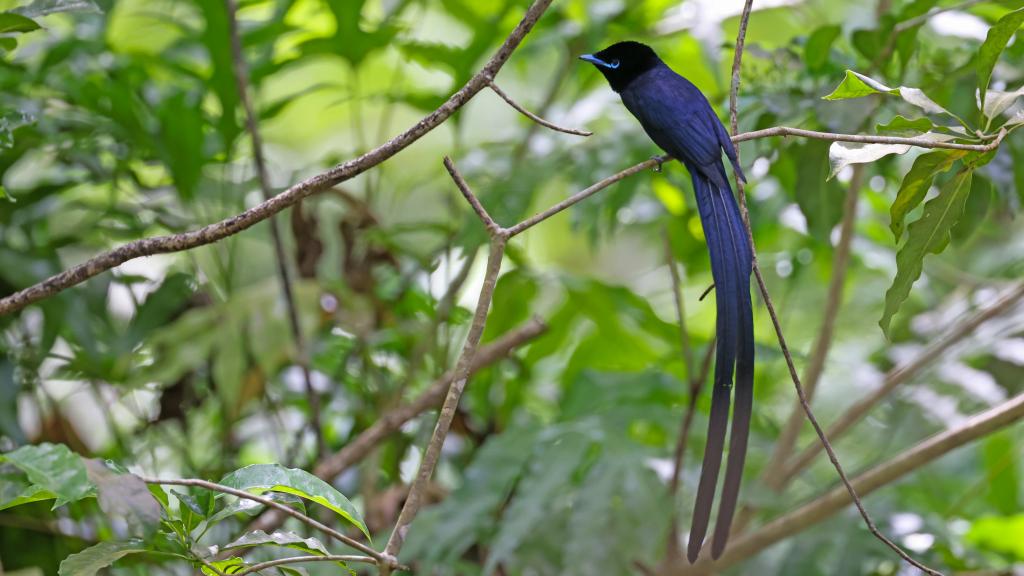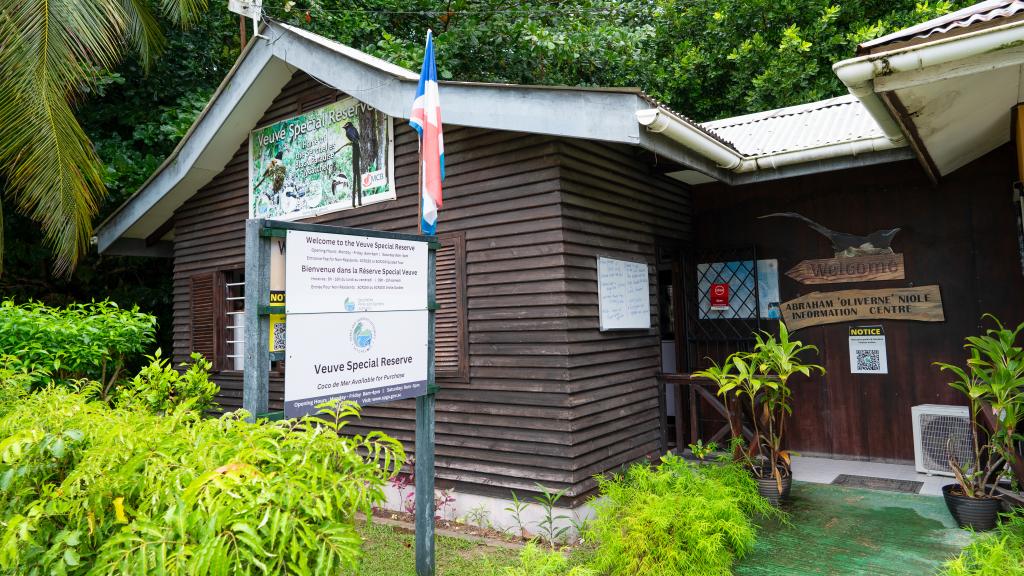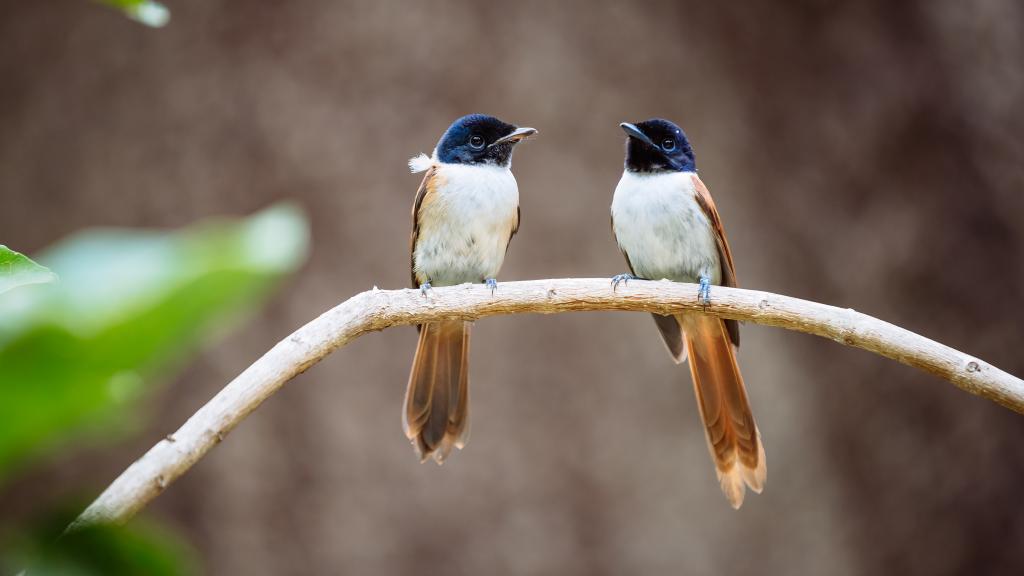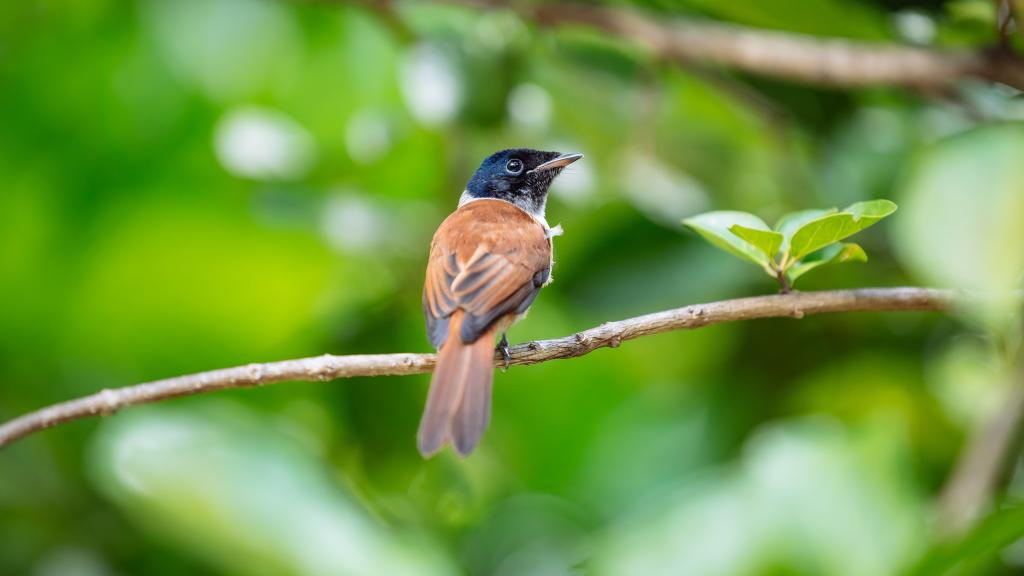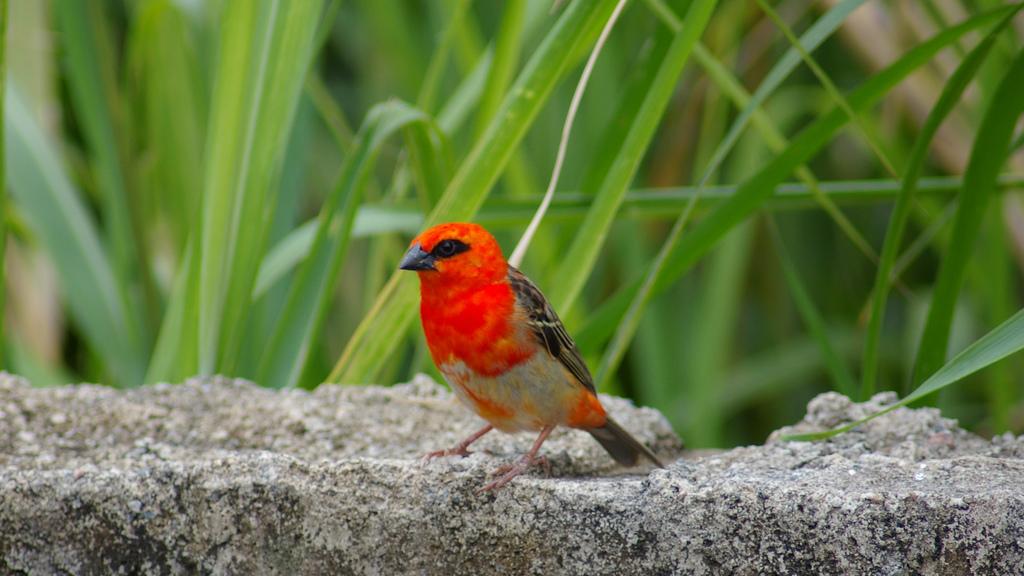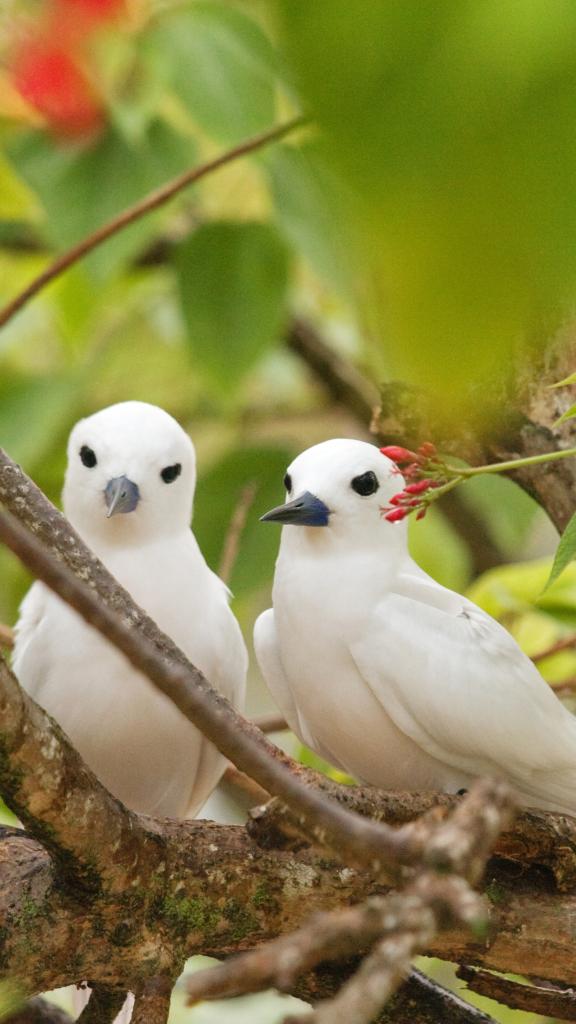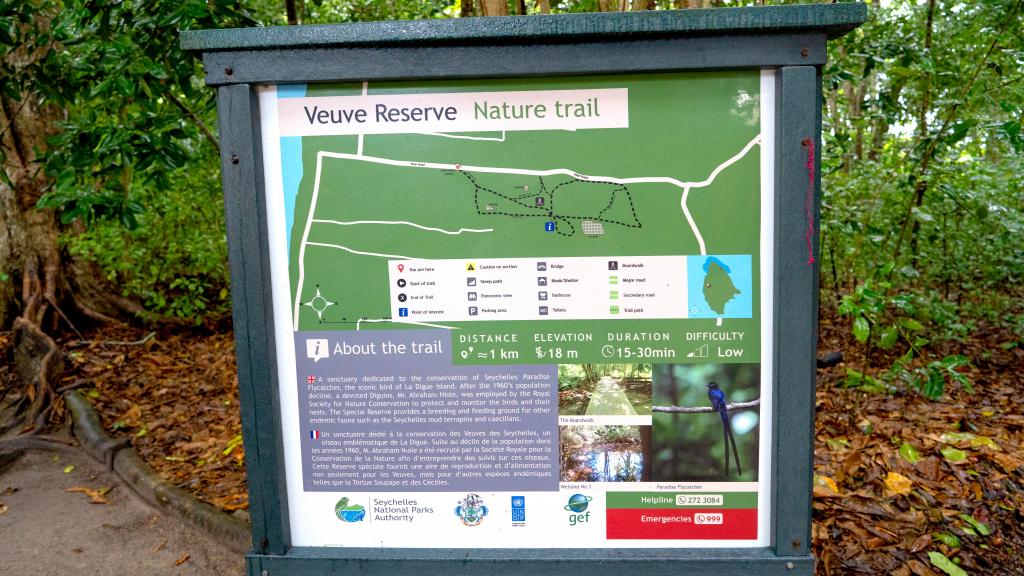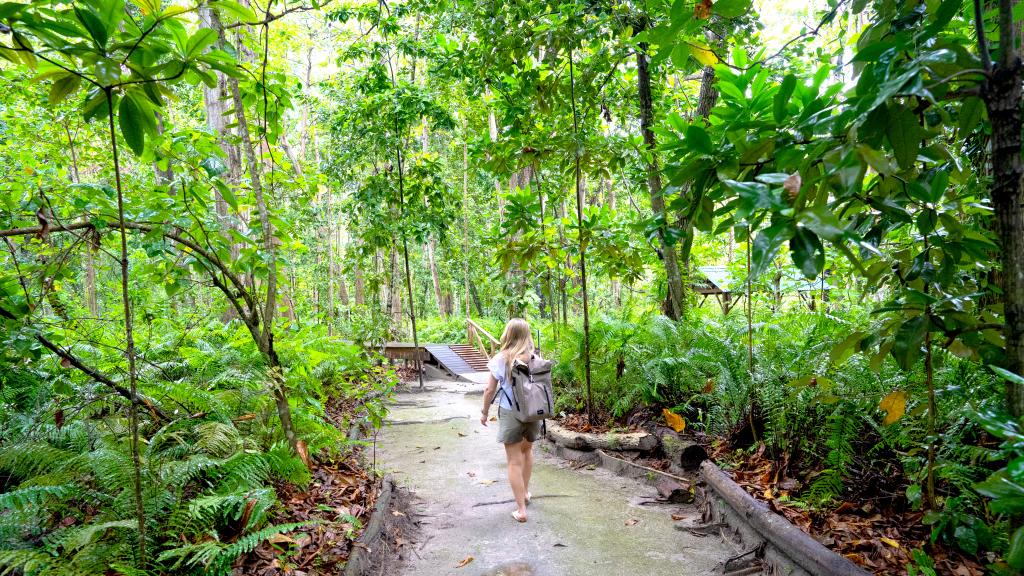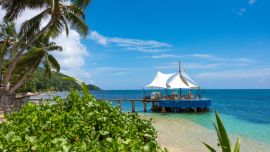Veuve Reserve
The Last Refuge of the Seychelles Paradise Flycatcher
The centre of the island has its own small nature reserve, the Veuve Reserve. This is the breeding ground of the Seychelles Paradise Flycatcher - a rare and endemic species, which immediately catches the eye thanks to its deep blue colour. The striking long black tail of the male also brought about the name "vèv" ( widower) for the species. It was discovered in 1860 on Praslin, where the birds once prevailed, before being found on Curieuse, Félicité, and La Digue. Only in the 1960s did it become clear how much the number of these birds had shrunk, so something was done to save the species from extinction.
In order to survive, the birds require insects and rich vegetation. Due to deforestation or alterations made by the cultivation of plants, it was decided to create a protective refuge for the birds. In 1982, the 21-hectare Veuve Reserve in the south of La Digue was born. There are several rangers who guard the area and bird experts who monitor the development of the birds, along with turtles, swiftlets, and other bird species.
In the information centre at the main entrance (the only environmental agency on La Digue), you can find literature about the Seychelles' nature, and ask an expert to lead you around the reserve (advance registration requested). The reserve can easily be explored alone and it quite manageable, with little danger of getting lost. There are also some benches spread throughout the reserve for you to take a rest and watch some animals. One point however, is that the Veuve Reserve is home to mosquitoes, so bring insect repellent!
Opening Times: Mon - Fri: 8.00 - 16.00, Sat - Sun: 9.00 - 15.00 | Seychelles Parks & Gardens Authority - Veuve Special Reserve | Admission: 150 SCR (ca. €9), a tour guide can be booked for additional 50 SCR (ca. €3)
South of the reserve is lies a Catholic church. At the feast of the Assumption (15th August), the islanders honour their patron saint with a solemn Mass and a great procession.
Next chapter: Diving & Snorkelling
